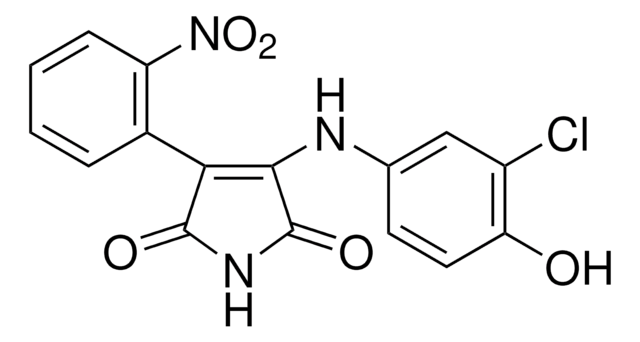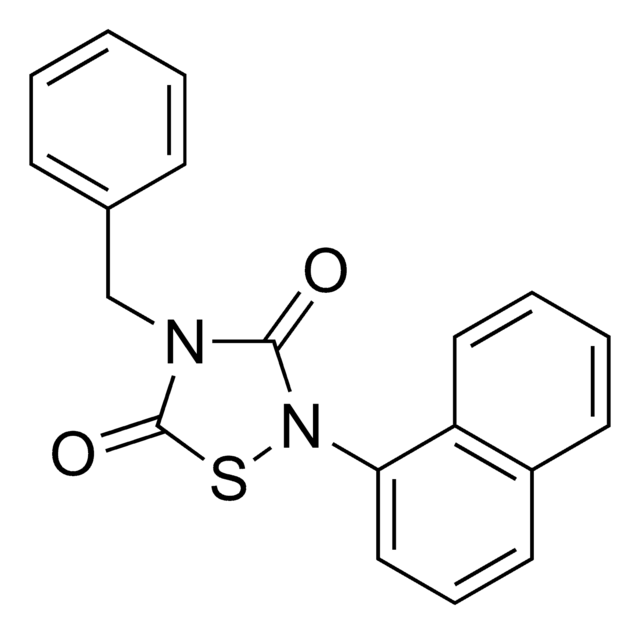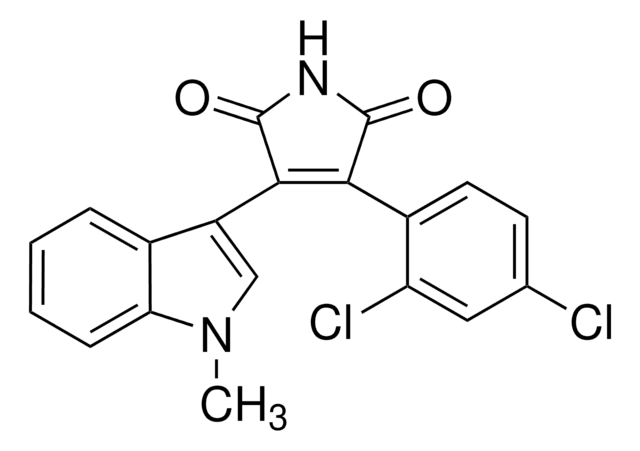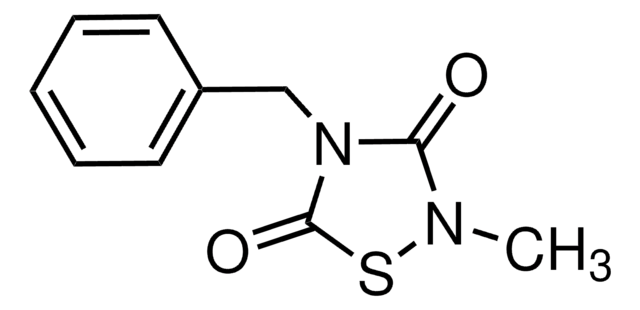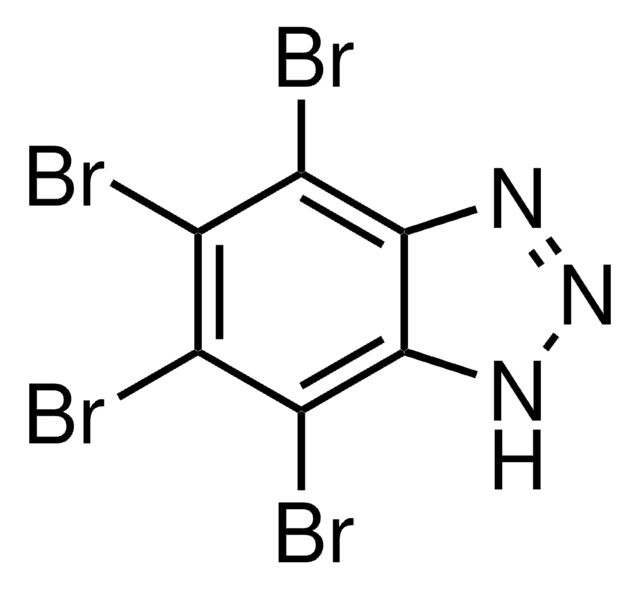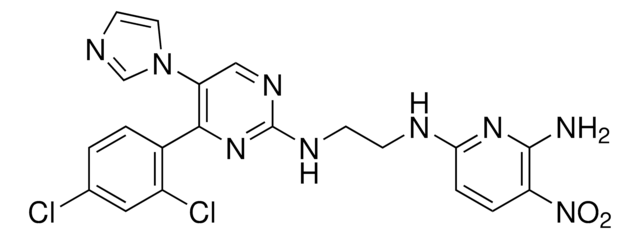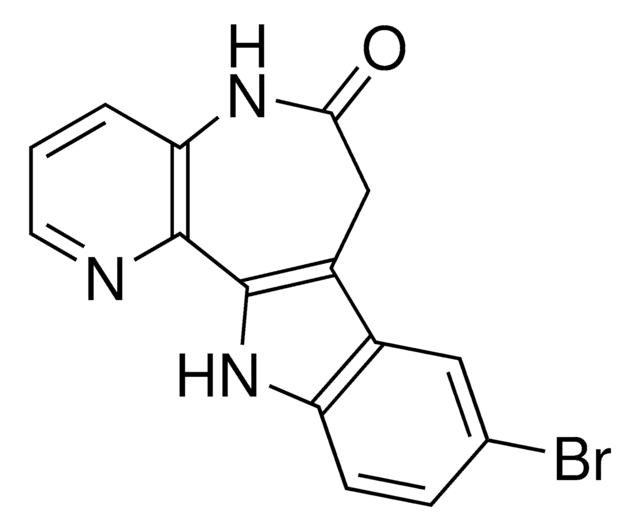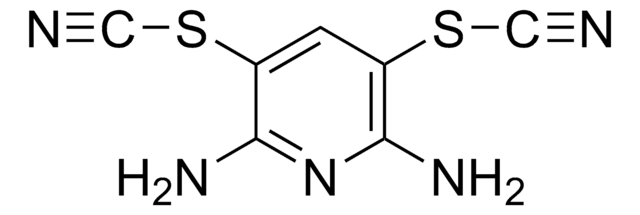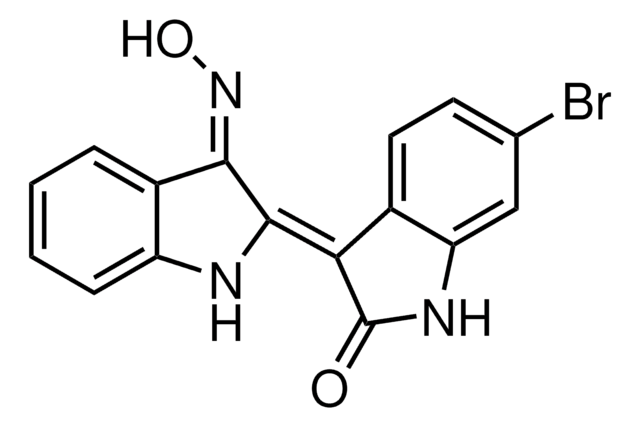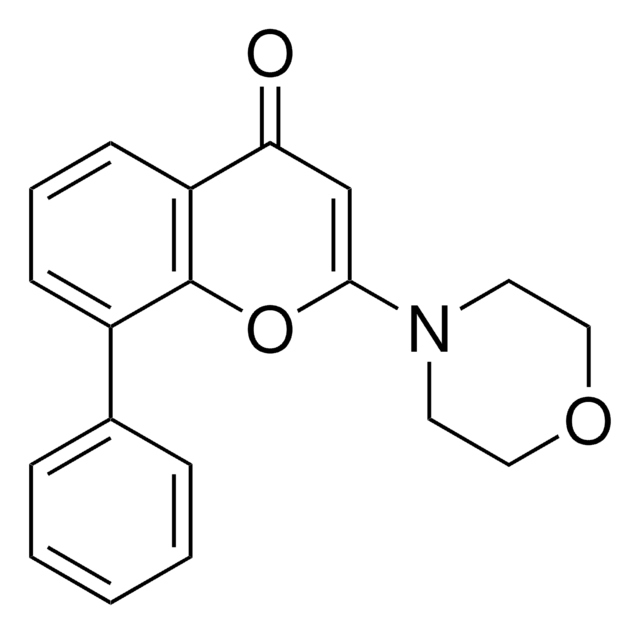A3230
AR-A014418
≥98% (HPLC), solid
Sinonimo/i:
N-(4-Methoxybenzyl)-N′-(5-nitro-1,3-thiazol-2-yl)urea
About This Item
Prodotti consigliati
Livello qualitativo
Saggio
≥98% (HPLC)
Forma fisica
solid
Colore
off-white to tan
Solubilità
DMSO: ≥20 mg/mL, clear, light yellow
H2O: insoluble
Ideatore
AstraZeneca
Temperatura di conservazione
2-8°C
Stringa SMILE
COc1ccc(CNC(=O)Nc2ncc(s2)[N+]([O-])=O)cc1
InChI
1S/C12H12N4O4S/c1-20-9-4-2-8(3-5-9)6-13-11(17)15-12-14-7-10(21-12)16(18)19/h2-5,7H,6H2,1H3,(H2,13,14,15,17)
YAEMHJKFIIIULI-UHFFFAOYSA-N
Descrizione generale
Applicazioni
Azioni biochim/fisiol
Caratteristiche e vantaggi
Codice della classe di stoccaggio
11 - Combustible Solids
Classe di pericolosità dell'acqua (WGK)
WGK 3
Dispositivi di protezione individuale
dust mask type N95 (US), Eyeshields, Gloves
Certificati d'analisi (COA)
Cerca il Certificati d'analisi (COA) digitando il numero di lotto/batch corrispondente. I numeri di lotto o di batch sono stampati sull'etichetta dei prodotti dopo la parola ‘Lotto’ o ‘Batch’.
Possiedi già questo prodotto?
I documenti relativi ai prodotti acquistati recentemente sono disponibili nell’Archivio dei documenti.
I clienti hanno visto anche
Articoli
Cancer stem cell media, spheroid plates and cancer stem cell markers to culture and characterize CSC populations.
Il team dei nostri ricercatori vanta grande esperienza in tutte le aree della ricerca quali Life Science, scienza dei materiali, sintesi chimica, cromatografia, discipline analitiche, ecc..
Contatta l'Assistenza Tecnica.
